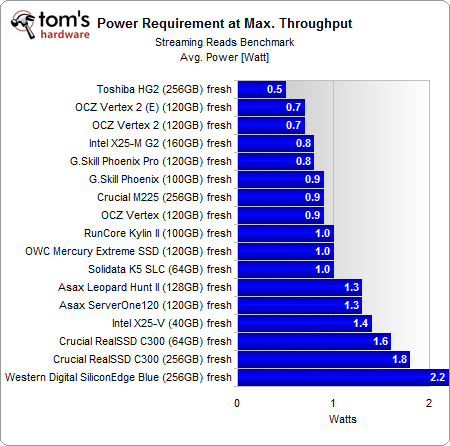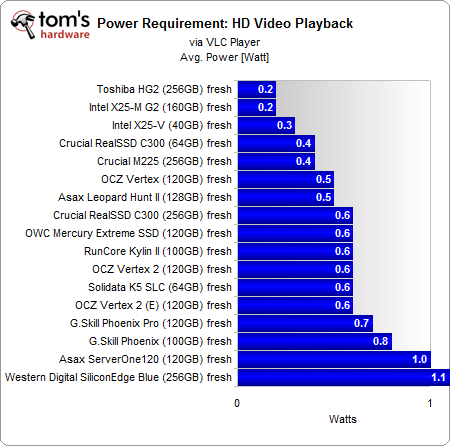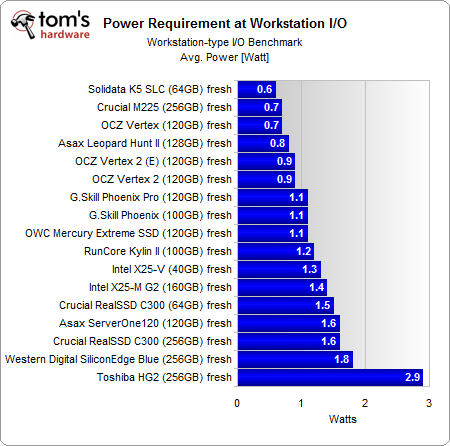Tom's Hardware's Summer Guide: 17 SSDs Rounded Up
Which SSD should you buy today? Seventeen flash-based drives battle across a benchmark suite that include throughput, I/O performance, consistency, power consumption, efficiency, and the best overall bang for the buck. The time is right to upgrade.
Benchmark Results: Power Consumption
Power consumption is very relevant for laptop users who intend to get an SSD as a replacement for their hard drive. As a general rule, SSDs are lower on power when it comes to idle power (active idle) with a few extreme examples from Crucial, Intel, and Toshiba. The other power consumption results were tracked at specific workloads, which makes more sense than trying to hunt down one peak power consumption number you'd never encounter in real life.
The undisputed lowest-power drives, at idle, are the Intel X25-M models and Toshiba’s HG2. Crucial’s RealSSD C300 is great as well, but only when discussing the low-capacity 64 GB model. The 256 GB flagship requires much more power in active idle.
Streaming read power consumption reflects the power the drive needs to deliver data at peak throughput. Once again, Toshiba operates at an amazing 0.5 W, followed by the SandForce-driven SSDs. Western Digital’s Silicon Edge Blue and Crucial's RealSSD C300 require the most power here. The Crucial drive delivers bone-crushing throughput, while WD is just one many drives in the 200 MB/s realm.
Enthusiasts need to know how much power an SSD requires when delivering a 1080p video stream, as this is a popular workload. Once again, Intel and Toshiba are unbeaten, requiring half the power of Indilinx drives or the WD SSD.
The workstation test involves heavy I/O activity and stresses SSDs in a much different way. Toshiba's drive, which is the lowest power consumer at idle or when delivering massive amounts of sequential data, is a real loser at high I/O activity. The Indilinx drives are lowest on power consumption under intensive I/O, but they also don’t deliver the same level of performance as the SandForce SSDs. Let’s look at how this translates into power efficiency.
Get Tom's Hardware's best news and in-depth reviews, straight to your inbox.
Current page: Benchmark Results: Power Consumption
Prev Page Benchmark Results: PCMark Vantage Next Page Benchmark Results: Power Efficiency


